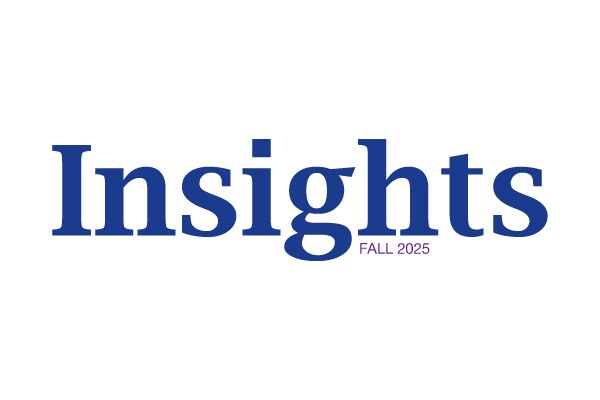Market Update – July 2025
The Canadian Economy: A resilient recovery amid the winds of change
The first half of 2025 has been anything but predictable. However, there have still been aspects of the economy that remained foreseeable. Following a series of interest rate reductions in the latter part of 2024 and the early months of 2025, markets are now watching closely to see whether the Bank of Canada (BoC) will continue with further cuts. As of June, the policy rate stands at 2.75%, and while inflation has cooled from its 2023 highs, it remains above the BoC’s 2% target, prompting a cautious, data-driven approach.
According to 1832 Asset Management (Portfolio Adviser for the Educators Dividend Fund), inflation pressures are also being driven by evolving U.S. trade policy. The new U.S. administration’s recently announced tariffs on Canadian goods, while potentially less severe than initially feared, are still considered meaningful. In their words: “The most significant tariffs in over 100 years introduced by the U.S. are anticipated to result in inflation and slower growth.”
Given the importance of Canada–U.S. trade relations, markets have responded with relative stability, reflecting confidence in the federal government’s approach to cross-border economic cooperation. According to RBC Global Asset Management, (Portfolio Adviser for the Educators Monitored Portfolios) the Canadian Gross Domestic Product (GDP) growth forecast has been upgraded due in part to the new Liberal government’s announced tax cuts and additional defence spending in this fiscal year.
Prime Minister Mark Carney’s newly elected Liberal minority has prioritized several high-level economic goals. These include accelerating housing development, introducing targeted tax relief, expanding provincial trade, and investing in national energy infrastructure and domestic manufacturing. Markets have responded positively to this policy direction, which has helped maintain stability amid broader economic uncertainty.
Despite ongoing global headwinds, Canada’s economy has remained stable. The unemployment rate rose to 7.0% in May—its highest since 2016 outside of pandemic conditions, according to Statistics Canada. On the upside, business investment in technology and infrastructure is helping offset some growth pressures. However, household debt remains a concern. Canada’s debt-to-income ratio reached approximately 173.9% in Q1 2025, with non-mortgage credit growing faster than disposable income. This dynamic may limit consumer resilience if borrowing costs increase again.
A global outlook: Caution in an era of division
Geopolitical instability continues to influence the global markets, with ongoing and escalating conflicts in the Middle East contributing to increased volatility. These disruptions have led many investors to reduce their risk exposure with a greater demand for safer asset classes. Although Canada has limited direct exposure to the conflict, the resulting uncertainty has contributed to more conservative portfolio positioning generally.
United States: Shifting currents
Closer to home, the U.S. economy continues to demonstrate strength, supported by robust employment and steady consumer spending. However, persistent high interest rates and rising consumer debt are starting to strain household finances. Moody’s downgrade of U.S. debt from AAA to AA in May 2025, while largely technical, served as a reminder of growing fiscal pressures in the U.S. Though markets reacted calmly, it underscored long-term concerns around rising debt levels, important context for Canadian investors with U.S. exposure.
The Federal Reserve has left its benchmark rate unchanged since March, emphasizing a data-dependent approach. While inflation has moderated, the anticipated inflationary impact from the U.S. administration’s so-called ‘Liberation Day’ tariffs did not materialize to the extent many analysts expected.
Global markets remain sensitive to ongoing political activity in the US. For Canadian investors, the focus has shifted to understanding how seemingly continually changing policy under the new U.S. administration may affect cross-border trade, regulation, and economic cooperation. While some short-term volatility has followed the transition, it remained important to focus on long-term goals and strategies while working with professional financial advisors to navigate evolving market dynamics.
Market performance and investor takeaways
Equity markets posted modest gains in Q2, supported by continued interest in sectors tied to long-term growth themes. In Canada, the TSX Composite Index increased over 4% during the quarter, helped by lower interest rates, a weaker US dollar and a rebound in commodity prices. While sectors like real estate and consumer discretionary delivered mixed results, overall investor sentiment remained steady, reflecting confidence in the broader economic backdrop.
South of the border, U.S. equity markets continued to benefit from strong corporate earnings and a softening inflation outlook. Both the S&P 500 and NASDAQ posted quarterly gains, with investor optimism supported by expectations for eventual easing of interest rates later in 2025 by the Federal Reserve (The Fed).
For diversified investors, Q2 served as a reminder of the importance of a well-constructed portfolio. While headlines can drive short-term change/volatility, consistent exposure across geographies and asset classes remains a reliable approach for managing your portfolio.
Looking ahead
As we enter the second half of the year, the outlook for Canadian investors is one of cautious optimism. Continued monetary easing and stable employment provide support for growth. However, recent government data shows that Canada’s population growth has started to slow, with fewer temporary residents and increased emigration in early 2025. This may slightly ease pressure on housing and public services, but it could also reduce the GDP momentum previously supported by high immigration levels.
For most investors, the path forward is not about reacting to every headline, but about staying aligned with long-term goals. A diversified portfolio, reviewed regularly with a trusted professional financial advisor or planner, remains the best defence against uncertainty.
We encourage you to reach out to your team here at Educators Financial Group to review your plan, ask questions, and ensure your investments remain well-positioned for the road ahead.
Sources:
Zyblock, MA, CFA, M., Lim, K., & Nguyen, MBA, CMT, CFA, J. (2025, April). 1832 investment counsel perspectives.
Fan, Claire. “Trade Resilience, Fiscal Tailwinds Boost Canada’s Growth Prospects.” RBC, 12 June 2025, www.rbc.com/en/thought-leadership/economics/economy-and-markets/financial-markets-monthly/trade-resilience-fiscal-tailwinds-boost-canadas-growth-prospects/. Accessed 18 June 2025.
Mukherjee, P. (2025, June 6). Canada’s May unemployment rate at multi-year high. Reuters. https://www.reuters.com/business/world-at-work/canadas-unemployment-rate-may-almost-nine-year-high-outside-covid-years-2025-06-06/
Geoghegan, T. (2025, April 29). Five things Carney says he will do as Canadian prime minister. https://www.bbc.com/news/articles/c209yrq3y2po
ET CONTRIBUTORS. (2025, June 14). Oil prices on the boil after Israel’s strike on Iran’s nuclear facility. What’s next? The Economic Times; Economic Times. https://economictimes.indiatimes.com/markets/commodities/news/oil-prices-on-the-boil-after-israels-strike-on-irans-nuclear-facility-whats-next/articleshow/121842255.cms?from=mdr
Press, The Canadian. “Statistics Canada Reports Household Debt-To-Income Ratio Ticked Higher in Q1.” BNN Bloomberg, 12 June 2025, www.bnnbloomberg.ca/investing/personal-finance/2025/06/12/statistics-canada-reports-household-debt-to-income-ratio-ticked-higher-in-q1/. Accessed 18 June 2025.


